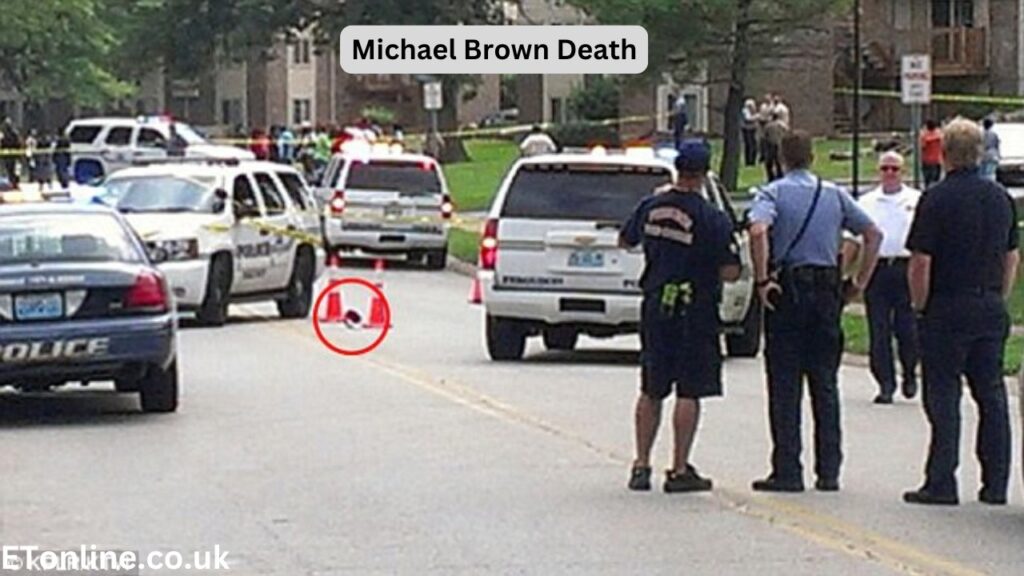The death of Michael Brown, a Black teenager, on August 9, 2014, in Ferguson, Missouri, stands as a watershed moment in American history. The events that followed—mass protests, the rise of the Black Lives Matter movement, and a renewed national conversation on race—have profoundly shaped the United States over the past decade. This article explores how Michael Brown’s tragic death not only transformed a suburban city but also ignited a decade-long reckoning on race, police brutality, and systemic injustice in America.
The Tragic Event in Ferguson: Michael Brown Death
The Circumstances of Michael Brown Death
Michael Brown, an 18-year-old Black teenager, was shot and killed by Darren Wilson, a white police officer, in Ferguson, Missouri, a suburb of St. Louis. The incident occurred after an encounter between Brown and Wilson, during which Brown was unarmed. The exact details of the confrontation remain disputed, but what is clear is that Brown’s death sparked immediate outrage, particularly within the African American community.
The Immediate Aftermath: Shockwaves Through Ferguson
News of Michael Brown death spread rapidly through Ferguson and beyond, leading to an outpouring of grief, anger, and frustration. Within hours, the streets of Ferguson were filled with protesters demanding justice. The initial protests were peaceful, but tensions quickly escalated as police responded with heavy-handed tactics, including the use of tear gas, rubber bullets, and a significant militarized police presence. This response only fueled the anger of the protesters and brought national attention to the situation.
Ferguson Becomes a Symbol of Resistance
As the protests in Ferguson continued, the city became a symbol of resistance against police brutality and racial injustice. The images of heavily armed police facing off against mostly peaceful protesters drew comparisons to scenes from the Civil Rights Movement of the 1960s. Ferguson, once a relatively unknown suburb, was now the focal point of a national and international conversation about race, policing, and the treatment of African Americans in the United States.
The Rise of the Black Lives Matter Movement
The Origins of Black Lives Matter
The Black Lives Matter (BLM) movement was founded in 2013 by activists Alicia Garza, Patrisse Cullors, and Opal Tometi, following the acquittal of George Zimmerman in the shooting death of Trayvon Martin. However, it was the death of Michael Brown and the subsequent protests in Ferguson that propelled BLM into the national spotlight. The hashtag #BlackLivesMatter began trending on social media, becoming a rallying cry for those protesting against systemic racism and police violence.
BLM in Ferguson: A Catalyst for National Movement
The protests in Ferguson served as a critical catalyst for the Black Lives Matter movement. Activists from across the country traveled to Ferguson to join the demonstrations, and BLM organizers played a key role in mobilizing and sustaining the protests. The movement’s emphasis on social media helped amplify the voices of those on the ground, bringing greater visibility to the issue of police violence against Black Americans. Ferguson became a proving ground for the tactics and strategies that BLM would use in future protests and actions.
Expansion and Impact of Black Lives Matter
In the years following Ferguson, Black Lives Matter grew into a global movement, with chapters and supporters around the world. The movement has focused not only on police violence but also on broader issues of racial inequality, including mass incarceration, economic disparities, and voting rights. BLM’s influence has been felt in multiple arenas, from politics to popular culture, and it has sparked a wider conversation about the ongoing impact of racism in American society.
A Nation’s Reckoning: The Broader Impact of Michael Brown Death
Transforming the National Dialogue on Race
Michael Brown’s death and the protests in Ferguson forced a national reckoning on race in America. Issues that had long been simmering beneath the surface—police brutality, systemic racism, and the marginalization of Black communities—were thrust into the public consciousness. The protests challenged Americans to confront the realities of racial injustice, leading to a shift in how these issues were discussed in the media, politics, and everyday conversations.
Changes in Policing and Criminal Justice
One of the most significant impacts of Michael Brown death has been the increased scrutiny of policing practices in the United States. The Ferguson protests brought attention to the widespread use of militarized police tactics and the lack of accountability for police officers involved in shootings of unarmed civilians. In response, there have been numerous calls for police reform, including the implementation of body cameras, changes in use-of-force policies, and efforts to increase transparency and accountability within law enforcement agencies.
Federal Investigations and the Ferguson Report
Following the protests, the U.S. Department of Justice launched an investigation into the Ferguson Police Department. The resulting report, released in March 2015, found a pattern of racial bias and discriminatory practices within the department. The report highlighted how Ferguson’s law enforcement disproportionately targeted African Americans, using excessive fines and arrests as a means of generating revenue for the city. The findings of the report were damning and led to calls for widespread reforms within the Ferguson Police Department and beyond.
The Movement for Police Reform
The movement for police reform has gained significant momentum over the past decade, driven in part by the legacy of Michael Brown and other high-profile cases of police violence. Activists and reformers have pushed for changes at the local, state, and federal levels, advocating for policies aimed at reducing police violence and improving community-police relations. While progress has been made in some areas, the struggle for comprehensive reform continues, as incidents of police violence against Black Americans persist.
Impact on Political Discourse and Activism
Michael Brown’s death and the rise of Black Lives Matter have also had a profound impact on political discourse in the United States. Issues of racial justice have become central to political campaigns and policy debates, influencing the platforms of candidates at all levels of government. The movement has also energized a new generation of activists, many of whom have gone on to become leaders in their communities and advocates for change.
BLM and the 2020 Presidential Election
The influence of Black Lives Matter was particularly evident during the 2020 presidential election. The killing of George Floyd in May 2020, coupled with the ongoing protests for racial justice, brought the issues of police violence and systemic racism to the forefront of the national conversation. Both major political parties were forced to address these issues, with the Democratic Party, in particular, adopting more progressive stances on racial justice as a result of pressure from activists and voters.
The Role of Social Media in Modern Activism
Social media has played a crucial role in the rise of modern activism, with platforms like Twitter, Facebook, and Instagram serving as powerful tools for organizing, raising awareness, and mobilizing supporters. The hashtag #BlackLivesMatter became a symbol of the movement, allowing people from around the world to engage with and support the cause. Social media has also enabled activists to bypass traditional media channels, reaching a global audience and building solidarity across borders.
The Ongoing Struggle for Racial Justice
Challenges and Setbacks in the Fight Against Racism
Despite the progress made over the past decade, the fight for racial justice in America remains fraught with challenges and setbacks. Police violence against Black Americans continues to be a pervasive issue, with numerous high-profile cases occurring in the years since Michael Brown’s death. The persistence of systemic racism, economic inequality, and voter suppression also underscores the deep-rooted nature of these issues.
High-Profile Cases Following Ferguson
The years following Ferguson have seen several other high-profile cases of police violence against Black Americans, including the deaths of Eric Garner, Tamir Rice, Freddie Gray, Sandra Bland, Philando Castile, Breonna Taylor, and George Floyd. Each of these cases has sparked protests and renewed calls for justice, highlighting the ongoing nature of the struggle for racial equality in the United States.
The Backlash Against Racial Justice Movements
The rise of Black Lives Matter and other racial justice movements has also been met with significant backlash, both from political leaders and segments of the public. Some have sought to discredit the movement, labeling it as radical or divisive. This backlash has been reflected in efforts to roll back progress on issues like voting rights, police reform, and education about systemic racism. The struggle for racial justice is therefore not only a battle against the status quo but also against attempts to reverse the gains that have been made.
The Role of Education and Awareness
Education and awareness are critical components of the ongoing struggle for racial justice. Efforts to educate the public about the history of racism in America, the impact of systemic inequality, and the importance of diversity and inclusion are essential for building a more just and equitable society. Schools, universities, and community organizations have increasingly focused on these issues, though debates over curriculum content and the teaching of critical race theory have also highlighted the contentious nature of this work.
The Importance of Historical Context
Understanding the historical context of racism in America is vital for comprehending the current struggles for racial justice. The legacy of slavery, segregation, and discrimination continues to impact the experiences of Black Americans and other marginalized groups. By educating people about this history, activists and educators can provide a deeper understanding of contemporary issues and advocate for meaningful change.
The Role of Activism and Policy Change in the Aftermath
Grassroots Activism and Local Efforts
In the wake of Michael Brown’s death and the subsequent rise of Black Lives Matter, grassroots activism has played a crucial role in driving local and national change. Grassroots organizations and community groups have mobilized efforts to address issues of racial injustice, police brutality, and economic inequality on the ground. These efforts have included organizing protests, advocating for policy changes, and providing support to affected communities.
Local activists have focused on various initiatives, such as establishing community watchdog groups to monitor police activity, creating programs for youth empowerment, and working to address disparities in education and employment. These localized efforts are essential for effecting meaningful change and addressing specific issues within individual communities.
The Impact of Policy Change on Law Enforcement Practices
The push for policy change has led to several significant reforms in law enforcement practices. These reforms have included the implementation of body-worn cameras, changes in use-of-force policies, and increased transparency and accountability measures. Some jurisdictions have also introduced new training programs for police officers, focusing on de-escalation techniques and bias reduction.
Despite these advancements, the pace of reform has been uneven, with some areas making significant progress while others lag behind. The challenge remains to ensure that reforms are implemented effectively and lead to tangible improvements in policing and community relations.
Legal and Legislative Reforms
The impact of the Ferguson protests and the broader Black Lives Matter movement has extended to legal and legislative arenas. Several states and municipalities have introduced new laws and policies aimed at addressing issues of police accountability, criminal justice reform, and racial equity.
For example, some states have enacted legislation to mandate the use of body cameras by law enforcement, enhance reporting requirements for police use of force, and establish independent oversight bodies to investigate police misconduct. Federal legislation, such as the George Floyd Justice in Policing Act, has also been proposed to address systemic issues in law enforcement and promote greater accountability.
The Influence on Elections and Political Engagement
The events following Michael Brown death have influenced political engagement and electoral politics. The heightened awareness of racial injustice and police violence has led to increased voter participation, particularly among young people and marginalized communities. Activists and organizations have worked to register voters, educate the public about candidate positions, and advocate for policies that address racial and social justice.
The impact of this increased political engagement was evident in the 2020 presidential election, where candidates were pressured to address issues of racial justice and police reform. The electorate’s focus on these issues has shaped campaign platforms and influenced policy discussions at all levels of government.
Long-Term Implications and Future Directions
The Evolution of Racial Justice Movements
The landscape of racial justice movements continues to evolve as new issues emerge and activism adapts to changing circumstances. The focus has expanded beyond police violence to include issues such as environmental justice, economic inequality, and immigrant rights. The interconnected nature of these issues underscores the need for a holistic approach to addressing systemic injustice.
Future directions for racial justice movements will likely involve continued advocacy for policy change, increased efforts to build coalitions across different social justice causes, and a focus on addressing the root causes of inequality. The movement’s ability to adapt and respond to new challenges will be crucial for sustaining progress and achieving lasting change.
The Role of Intersectionality in Activism
Intersectionality, a concept introduced by Kimberlé Crenshaw, has become an important framework for understanding and addressing the complexities of racial injustice. Intersectional activism recognizes that individuals experience multiple, intersecting forms of oppression based on race, gender, class, and other factors. This approach allows activists to address the unique challenges faced by individuals who are affected by multiple forms of discrimination and to advocate for more inclusive and equitable solutions.
The Importance of Continued Public Awareness
Ongoing public awareness and education are essential for sustaining the momentum of racial justice movements. Continued efforts to educate the public about issues of systemic racism, historical context, and the importance of diversity and inclusion will help to maintain focus on these critical issues and support ongoing advocacy efforts.
Community organizations, educational institutions, and media outlets all play a role in fostering awareness and promoting informed discussions about racial justice. By continuing to engage with these issues and providing platforms for marginalized voices, society can work towards a more equitable and just future.
The Role of Personal Responsibility and Community Engagement
Individual and community-level engagement remains vital in the fight for racial justice. Personal responsibility involves actively challenging prejudice, supporting equitable policies, and participating in community initiatives that promote justice and inclusion. By taking collective action and working together, individuals can contribute to creating a more just society.
Community engagement can take many forms, including volunteering with local organizations, supporting businesses owned by marginalized individuals, and participating in local advocacy efforts. These actions help to build stronger, more resilient communities and contribute to the broader movement for social change.
Conclusion: Reflecting on the Legacy of Michael Brown
The death of Michael Brown and the subsequent events in Ferguson have had a profound impact on American society. The transformation of Ferguson from a quiet suburb to a symbol of resistance against racial injustice highlights the power of grassroots activism and the importance of addressing systemic issues. The rise of the Black Lives Matter movement and the broader conversations about race and policing reflect a growing awareness of the need for change.
As the nation continues to grapple with issues of racial justice, the legacy of Michael Brown serves as a reminder of the urgent need for reform and the ongoing struggle for equality. The continued efforts of activists, policymakers, and communities will be crucial in shaping the future and ensuring that the lessons learned from Ferguson lead to lasting and meaningful change.
Also Read: Ipswich Town vs Liverpool: A Comprehensive Matchday Preview



